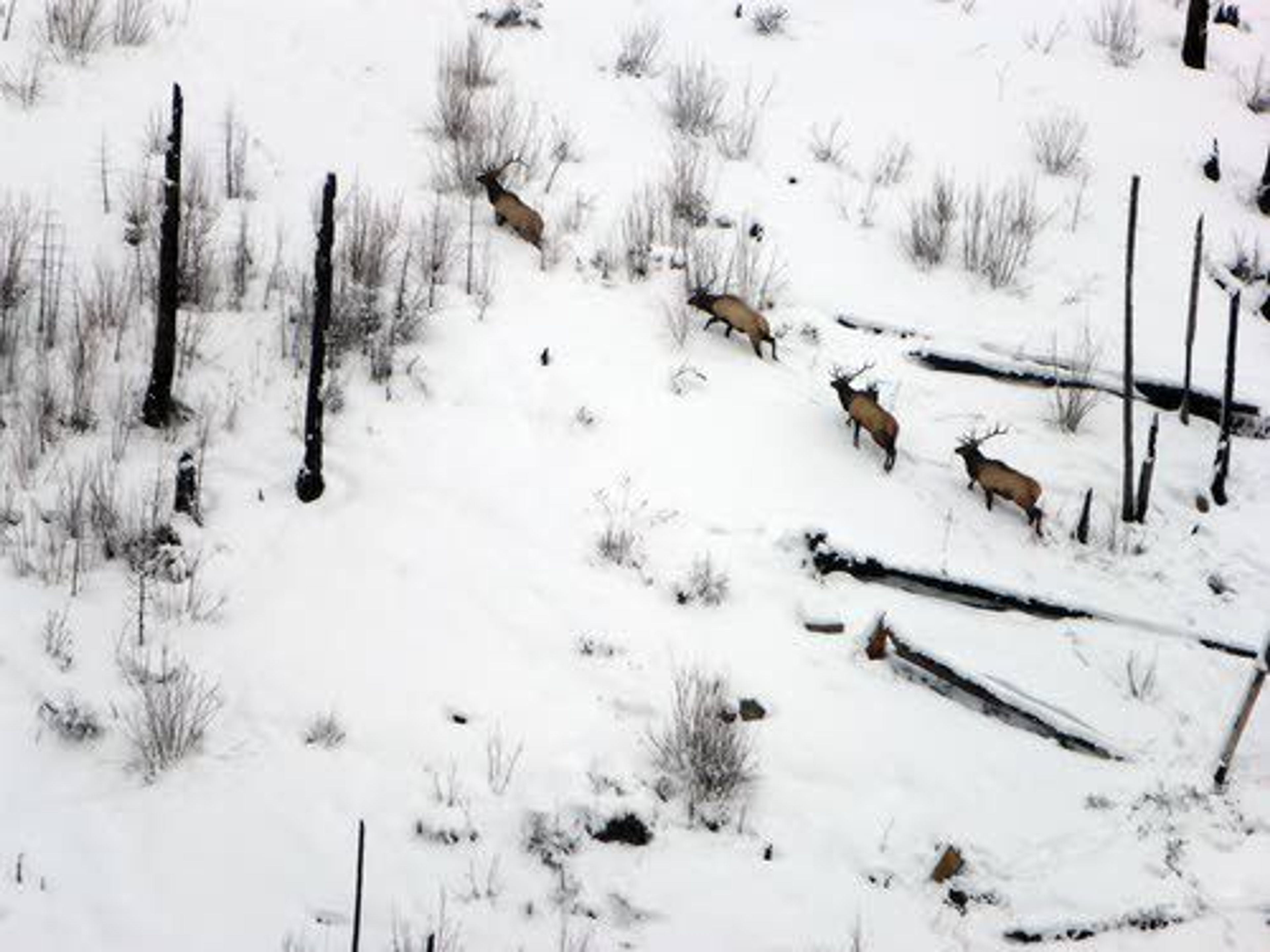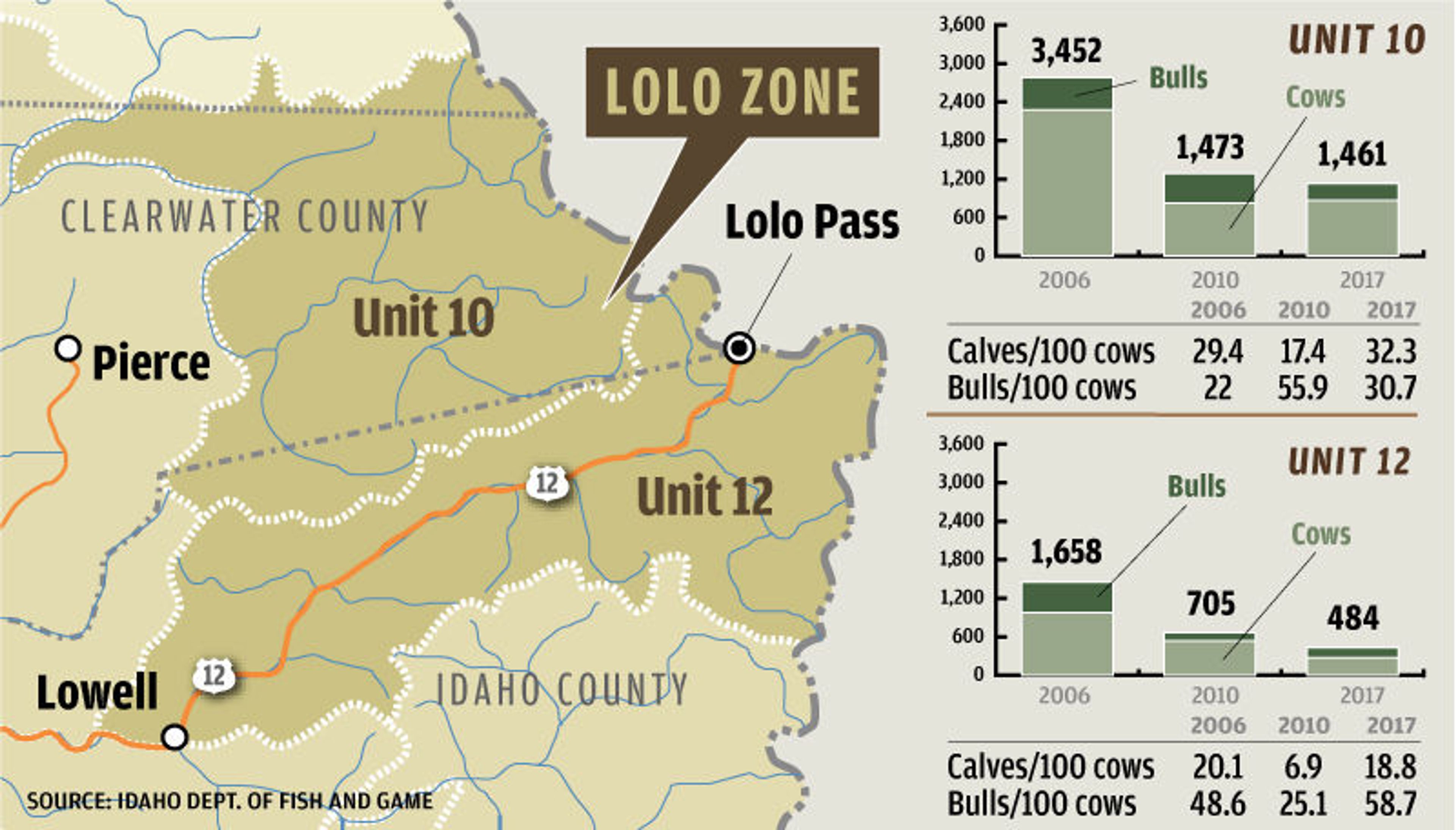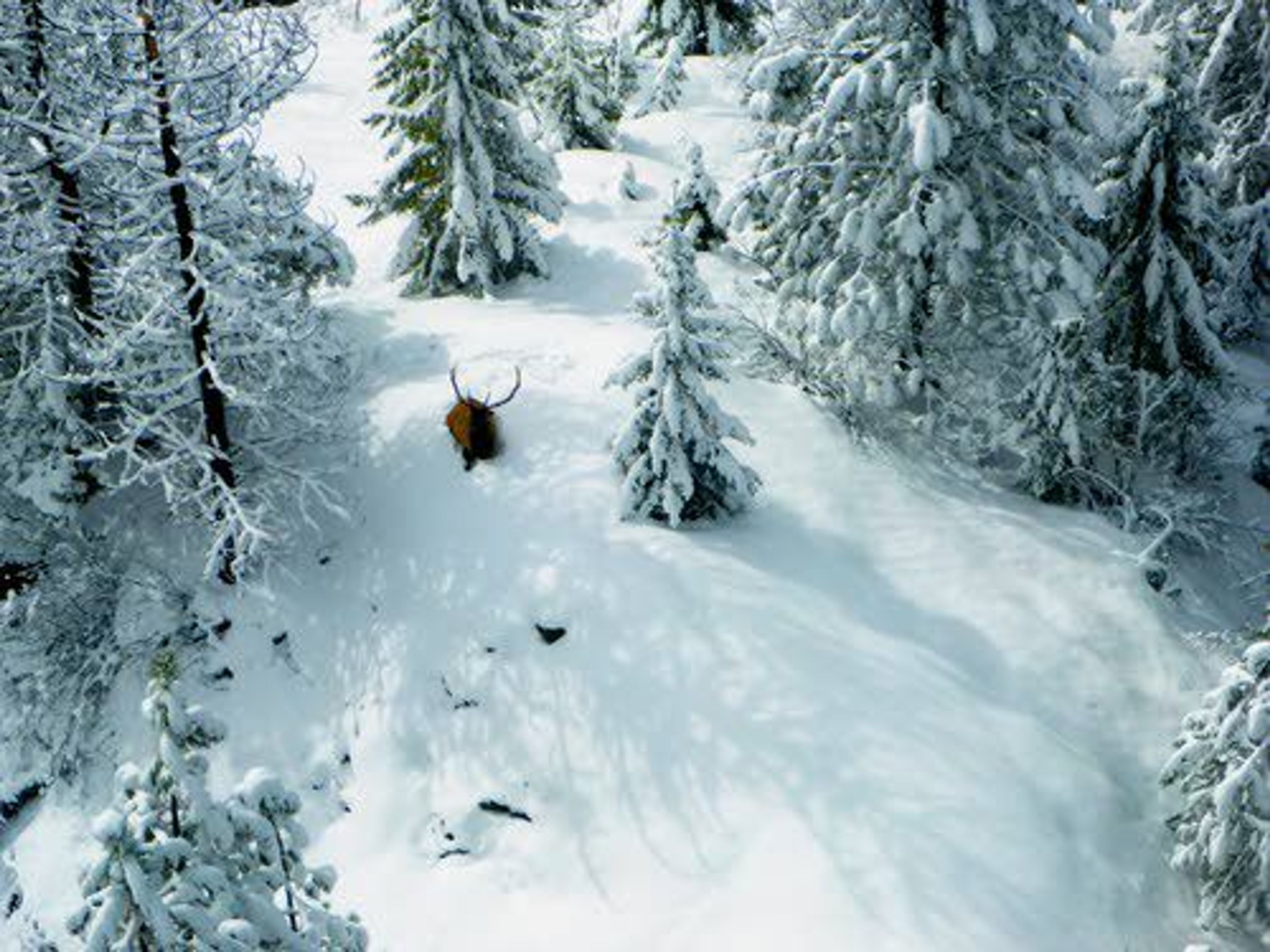For Lolo Zone elk, the struggle continues
Elk survey in Lolo Zone reveals decrease in numbers but some encouraging signs as habitat rebounds
Idaho's troubled Lolo elk herd showed both positive and negative signs following the first population survey of the animals since 2010.
The number of elk in the remote Lolo Zone, which is comprised of hunting units 10 and 12, dropped yet again but calf-to-cow ratios are up and the age structure of bulls is more diverse.
"It's not all good news but there is some good news in there," said Clay Hickey, regional wildlife manager for the Idaho Department of Fish and Game at Lewiston.
Biologists counted 1,945 elk during the survey conducted last winter. That is a decrease compared to 2,134 counted in 2010. Surveyors tallied 1,461 elk in Unit 10 and 484 in Unit 12.
The Lolo elk herd has been struggling for more than two decades. In 1989, the herd numbered more than 15,000 animals and exceeded the department's objectives of 1,300 to 1,900 bulls and 6,100 to 9,100 cows.
But by then, the expansive brush fields and young, open forests created by large wildfires in the first half of the 20th century had begun to close in. The quality of food available for the elk under an ever-growing canopy shrank and so did the herds.
The long and harsh winters of 1996 and 1997 dealt another blow to the herd. In the years following, habitat quality continued to decline while healthy black bear and mountain lion populations took their toll. By the time elk numbers had somewhat equalized with the habitat quality, wolf numbers were on the rise and took a further toll on the herd.
Biologists believe the habitat is now able to support the much smaller herd but predators are limiting its recovery. Hickey said the animals appeared to be in good health during the survey in which biologists count elk while flying over the snow-covered mountains in helicopters.
In Unit 10, the population was statistically flat. Biologists counted 1,461 elk, just 12 fewer than seven years ago. They recorded a slight increase in the number of cows, from 824 in 2010 to 866 this year and calves increased nicely from 144 to 280. They also had a bump in the cow-to-calf ratio there, from 17.4 calves per 100 cows in 2010 to 32 per 100, "which is as high as we have had in there since I've been here," Hickey said. The state's elk plans direct wildlife managers to aim for a calf-to-cow ratio in excess of 30 per 100.
Bull numbers were down in Unit 10. They counted 461 in 2010 compared to just 266 in the unit this year. Adult bulls took a big hit, dropping from 277 seven years ago to 42 this year. On the up side, they counted 103 spikes this year compared to just 14 in 2010.
Unit 12 had a population of 484 compared to 705 in 2010. That includes 271 cows and 159 bulls. The 2010 survey recorded 534 cows and 133 bulls. The calf-to-cow ratio was 18.8 per 100, an increase from 6.9 recorded in 2010.
"It's a substantial increase but it is still a little low," Hickey said.
The department has a strategy to reduce wolf, mountain lion and black bear populations in the unit by employing liberal hunting seasons and bag limits. It has also partnered with the federal Wildlife Services agency in recent years to kill wolves in the unit. Those operations are generally carried out in February and announced only after their completion.
The department has not announced any wolf control efforts this winter. Jerome Hansen, regional manager for the Idaho Department of Fish and Game at Lewiston, did not immediately return a phone call seeking information on wolf control in the unit.
The agency is working with the Nez Perce-Clearwater National Forest and the Rocky Mountain Elk Foundation in an effort to improve habitat in the zone. At a Clearwater Basin Collaborative meeting Wednesday, Mike Wisdom, a research biologist with the U.S. Forest Service, said the Lolo Zone is one of many areas in the forest that has a high potential for elk habitat improvement through either logging or burning.
For years, the agency has tried to use a mix of prescribed and natural fires in the more remote areas of the zone to open the forest and improve the quality of elk habitat. Retired fire management officer Mike Lubke said that program fell off starting in about 2011 but resumed last summer with a modest burn in the Bernard and Junction drainages that officials estimated improved elk habitat on about 1,500 acres.
---
Barker may be contacted at ebarker@lmtribune.com or at (208) 848-2273. Follow him on Twitter @ezebarker.












